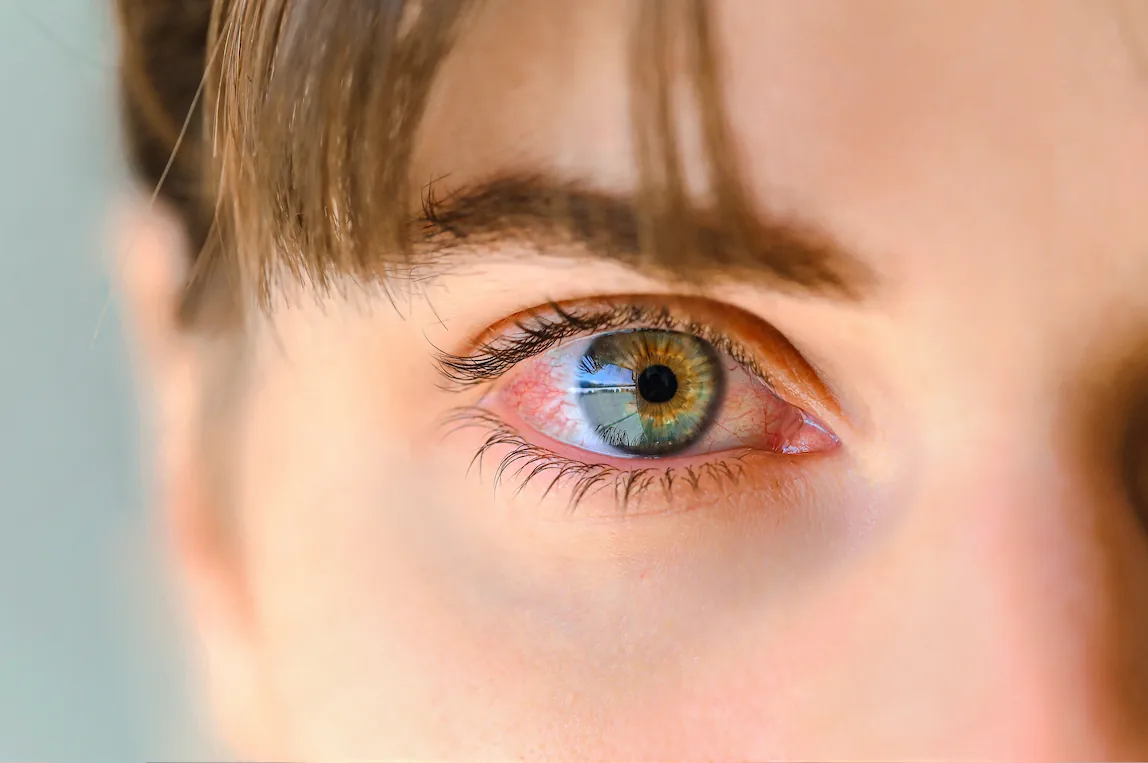Dry Eye Syndrome
Southern Eye Group prides itself on being at the forefront of eye treatment. Our offices in Alabama, Florida, Mississippi and throughout the Gulf Coast are home to some of the areas’ leading eye doctors and vision specialists. Given the impact that Dry Eye Syndrome has on the population, Southern Eye Group has innovated our practice further by creating our dedicated Dry Eye Clinic, a distinct offering from our care facility that specializes in Dry Eye Syndrome treatment and management.

What is Dry Eye Syndrome?
More than
Trusted Source
Prevalence of Diagnosed Dry Eye Disease in the United States Among Adults Aged 18 Years and Older
Farrand KF, Fridman M, Stillman IÖ, Schaumberg DA
Go to Source
16 million adults
in the United States are affected by dry eye, often referred to as dry eye syndrome or dry eye disease.
Tears are essential to the health of our eyes. When we blink, tear film lubricates the eyes and also washes away debris. Tear film is also essential in preventing eye infections and keeping vision clear. In people with
Trusted Source
What is dry eye?
American Academy of Ophthalmology
Go to Source
dry eye syndrome
, the eyes either don’t produce enough tears or produce tears of poor quality or lacking in sufficient oil.

Symptoms of Dry Eye
Dry eye symptoms usually affect both eyes, and
Trusted Source
Dry Eyes
Mayo Clinic
Go to Source
may include:
- Eyes that feel gritty
- Burning or stinging
- Eyes that water frequently
- Light sensitivity
- The sensation that there is
something in the eyes - Redness
- Mucus on or around the eyes
- Difficulty seeing while driving at night
- Difficulty or discomfort wearing contacts
- Tired eyes
- Blurred vision
Causes of Dry Eye
The most common cause of dry eye syndrome is meibomian gland dysfunction, or MGD, which affects
Trusted Source
Distribution of aqueous-deficient and evaporative dry eye in a clinic-based patient cohort: a retrospective study
Lemp MA, Crews LA, Bron AJ, Foulks GN, Sullivan BD
Go to Source
up to 85%
of dry eye patients. The meibomian glands in the eyes secrete meibum, an oil essential to eye lubrication. In patients with meibomian gland dysfunction, the meibomian glands don’t function properly. Usually, this is due to a blockage of the meibomian glands.
Factors that may also cause or contribute to dry eye symptoms include:
- Age
- Extensive screen time
- Sun exposure
- Hormonal changes or imbalances
- Medications
- Medical conditions such as lupus, rheumatoid arthritis, or thyroid disorders
- Environmental factors such as dry weather, heat, smoke, and air conditioning
Home Remedies for Dry Eye
In cases where patients suffer from occasional dry eye, at-home treatments may effectively alleviate their symptoms. Home remedies for dry eye include:
- Eye drops (purchase drops designed to lubricate, not just treat redness)
- Warm compress
- Environmental changes, like moving fans or eliminating dust
- A diet rich in omega-3 fatty acids
Professional Dry Eye Treatment
There are many ways to treat Dry Eye Syndrome and neutralize the discomfort the condition may be causing in your life. Southern Eye Group has created the Dry Eye Clinic to specifically treat patients with this condition through new, advanced diagnostic technologies and devices. Dry eye treatments we offer include:
- Prescription eye drops
- Punctal plugs
- iLux® treatment for MGD
Learn More About Dry Eye Treatment
Dry Eye Evaluation
Fill out our Dry Eye Clinic evaluation form today if you believe you need help treating and managing Dry Eye Syndrome. This form will go straight to our practice and will allow our eye specialists to determine how we can be of most help to you. You may also contact us directly by calling 251-990-3937 if you have any questions or request an appointment online. For your convenience, Southern Eye Group maintains offices in Alabama, Florida, Mississippi and throughout the Gulf Coast.

Contact Southern Eye Group
If you are interested in learning more about LASIK, PRK, and other vision correction surgery procedures, please contact us to schedule a consultation with our ophthalmology team at one of our many locations throughout the Gulf Coast.
1 Farrand KF, Fridman M, Stillman IÖ, Schaumberg DA. Prevalence of Diagnosed Dry Eye Disease in the United States Among Adults Aged 18 Years and Older. Am J Ophthalmol. 2017;182:90‐98. doi:10.1016/j.ajo.2017.06.033. Available: https://pubmed.ncbi.nlm.nih.gov/28705660/. Accessed May 24, 2022.
2 American Academy of Ophthalmology. What is dry eye? Available: https://www.aao.org/eye-health/diseases/what-is-dry-eye. Accessed May 24, 2022.
3 Mayo Clinic. Dry Eyes. Available: https://www.mayoclinic.org/diseases-conditions/dry-eyes/symptoms-causes/syc-20371863. Accessed May 24, 2022.
4 Lemp MA, Crews LA, Bron AJ, Foulks GN, Sullivan BD. Distribution of aqueous-deficient and evaporative dry eye in a clinic-based patient cohort: a retrospective study. I. 2012 May;31(5):472-8. doi: 10.1097/ICO.0b013e318225415a. PMID: 22378109. Available: https://pubmed.ncbi.nlm.nih.gov/22378109/. Accessed May 24, 2022.
5 TearLab Corporation. TearLab Patient Information. Available: https://trukera.com/scoutpro/. Accessed May 24, 2022.
The doctors at Southern Eye Group have either authored or reviewed and approved this content.
Page Updated:


